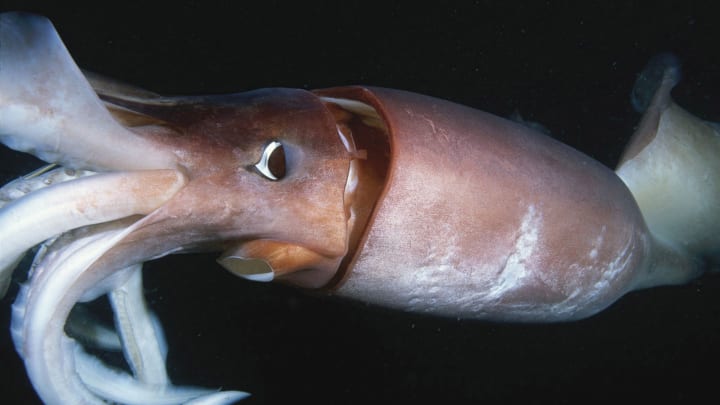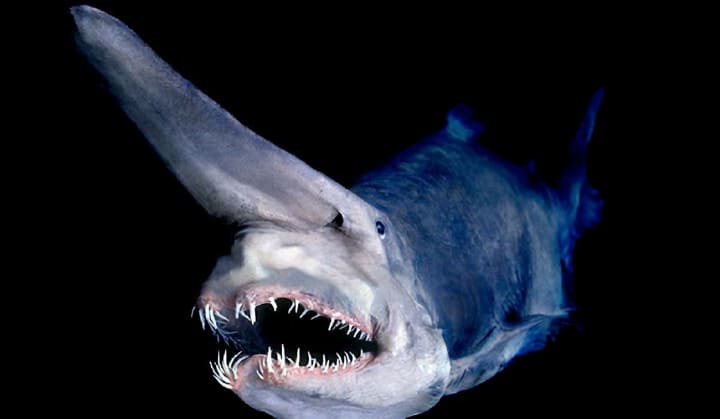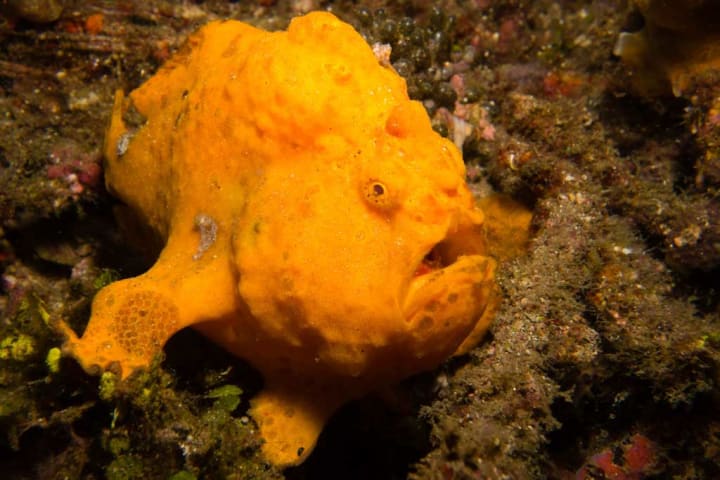Creatures of the Deep
Unusual sea and ocean creatures from all over the world

Mimic octopuses can imitate the appearance and mannerisms of fifteen different species. This makes them the ultimate imposters in the animal world. This octopus was discovered twelve years ago. Mimic octopuses make their home in the tropical waters of South East Asia. They exist on a diet of small fish and crabs. They have the ability to change color and texture so they can match their surroundings. The most amazing thing is that mimic octopuses can take on the appearance of other creatures like lionfish, jellyfish, sea snakes, flounders, stingrays and others.

Gulper eels make their home in Australia. These strange-looking creatures have massive, pelican-like mouths. This gives them the ability to eat prey bigger than themselves. Gulper eels live in depths up to 10,000 feet. However, despite their big mouths, they have small teeth so they cannot chew big quantities at one time. With the tip of their tails, gulper eels use light to lure prey.

Spider crabs live in the waters surrounding Japan. These are giant crabs with bodies the size of basketballs. They walk on the ocean floor with eight legs and use their two large pincers to catch prey. They have mottled orange-and-white bodies and cream-colored undersides. Their spiny, oval carapaces can blend in with the rocks on the ocean floor. Their diets include dead animals or plant matter.

Anglerfish lure prey with their elongated dorsal spines which they wave around until the tip lights up. They have large mouths and sharp teeth. The females are the larger of the two genders. These creatures live near the ocean floor and have bodies that are doroventrally compressed meaning that their bodies are shorter with wider sides. They feed on fish, crustaceans, and cephalopods. With their large mouths, they can swallow prey as is almost as large as they are themselves. Anglerfish can be found worldwide.

Colossal squids are larger than giant squids but have shorter tentacles. Their tentacles are lined with swiveling hooks. They live at least 2000 meters beneath the sea in the Antarctic region of the world. These squids are the largest known invertebrate on the planet and have eyes as large as basketballs. They enjoy eating Antarctic toothfish.

Firefly squids are covered with thousands of light-emitting organs called photophores. These can blink in unison or separately. They make their home in the West Pacific Ocean mostly off the coast of Japan. Tourists enjoy seeing their light displays. They have relatively large eyes, eight arms, and two tentacles. These squids feed on plankton, crustaceans, fish, and squid.

Goblin sharks are strange-looking sharks they have long, trowel-like snouts, and electro-sensitive organs that can replace sight at hundreds of meters deep in the ocean. Their jaws protrude from their faces when they bite their prey. These sharks are found in deep seas worldwide and in every major ocean. In the western Atlantic Ocean, they can be found in the Gulf of Mexico, off the coast of Brazil, and in other parts of South America. Their diets consist of dragonfish, rattails, angelfish, and others and will feed on crustaceans and cephalopods like squid.

Sea wasps are the most venomous creatures on the planet. They are a type of box jellyfish with enough venom to kill sixty adult humans. They are found off the Australian coast and have been known to kill snakes, sharks, and saltwater crocodiles. Sea wasps can also be found in southeast Asia and in parts of the Indian Ocean, Pacific Ocean, and the Great Barrier Reef, They are pale blue and hard to see in clear ocean waters. They feed on plankton and small animals.

Blobfish are found off the coast of Australia and Tasmania. They live at depths of about 800 meters. Their skin is a gelatinous mass that is less dense than water so they can float above the ocean floor. Their diets consist of sea urchins and mollusks.

Tardigrades are also called water bears or moss piglets. They have scrunched-up heads and long, plump bodies. They live in a variety of habitats worldwide making their home in damp moss, on flowering plants, in the sand, in freshwater, and in the sea, They have well-developed head regions and short bodies with four fused segments. Each segment has a pair of short, stout, unjointed limbs ending in several sharp claws. They are plant-eating.

Yeti or furry lobsters have hair appearances. They feed on bacteria fertilized by their own legs. Known as Kiwa hirsuta they live in the depths of the South Pacific Ocean.

Moray eels make their home in the Indo-Pacific Ocean. They can be spotted with only their heads sticking out of holes in reefs. They flare their nostrils to attract prey and clamp down on their prey with strong jaws. When they retreat into their burrow they can stay there for months or even years.

Dumbo octopuses have two large fins on either side of their mantles that jut out like ears. This makes them look like the animated elephant character in Disney’s Dumbo which gave them their name. They have short arms, with bodies shaped like bells, and hover over the seafloor. They live up to 13,000 feet below the surface. Their diets include snails, worms, and other creatures found on the ocean floor. They make their home in the Pacific Ocean.

Flamingo tongue snails are marine gastropod mollusks. They are soft, slimy animals that carry their houses. They feed on corals and make their homes in the tropical waters of the western Atlantic Ocean. These snails are bright-orange-yellow with black markings, While feeding on the coral they absorb toxic chemicals that are in the corals and deposit them in their mantles.

Pinecone fish make their home in the Indo-Pacific Oceans. They have bodies that have patterns resembling pinecones. They have phosphorescent organs on either side of their lower jaws. Their bioluminescent organs attract the plankton on which they feed at night.


Red lionfish are frightening with their venomous needle-like fins. They make their home on the sandy bottoms of the Eastern Atlantic and Mediterranean Seas. They have white stripes that alternate with red, maroon, and brown stripes. These fish were named for their venomous spines which stick out from their back and look like the mane of a lion. They are carnivores and eat fish and crustaceans.

About the Creator
Rasma Raisters
My passions are writing and creating poetry. I write for several sites online and have four themed blogs on Wordpress. Please follow me on Twitter.






Comments
There are no comments for this story
Be the first to respond and start the conversation.